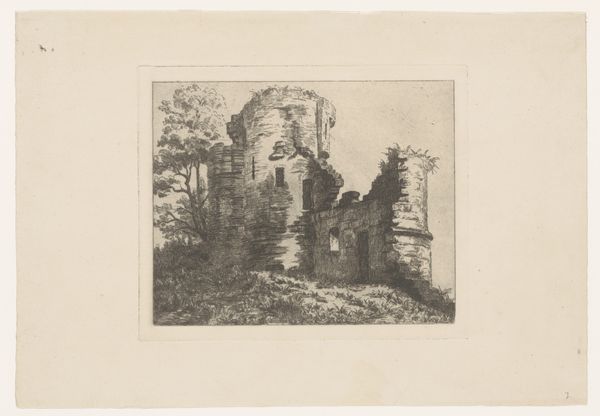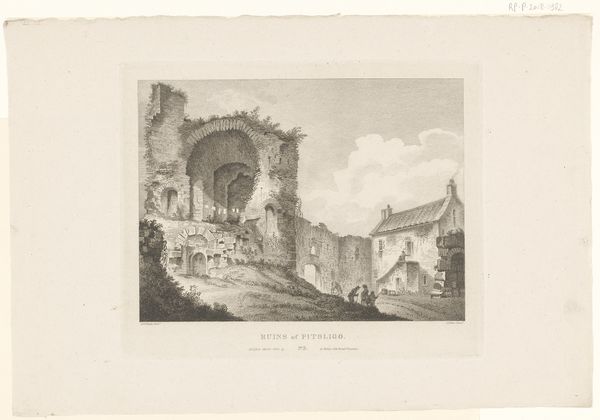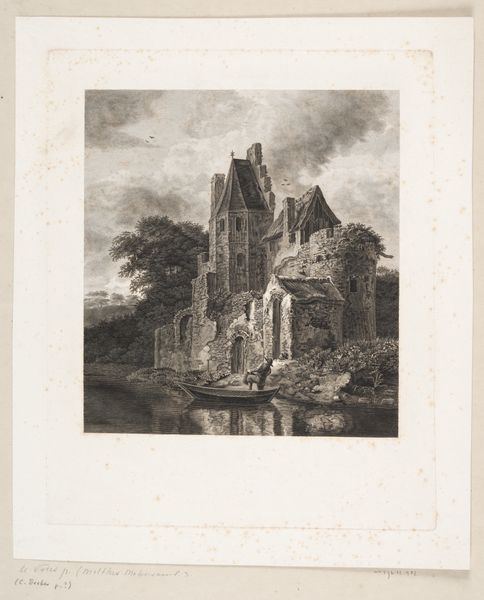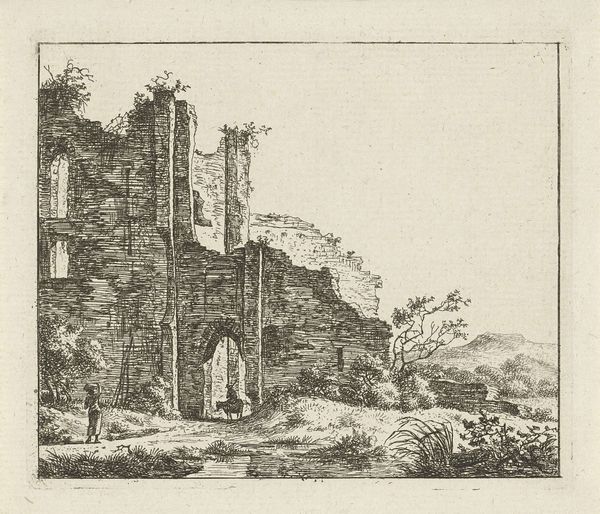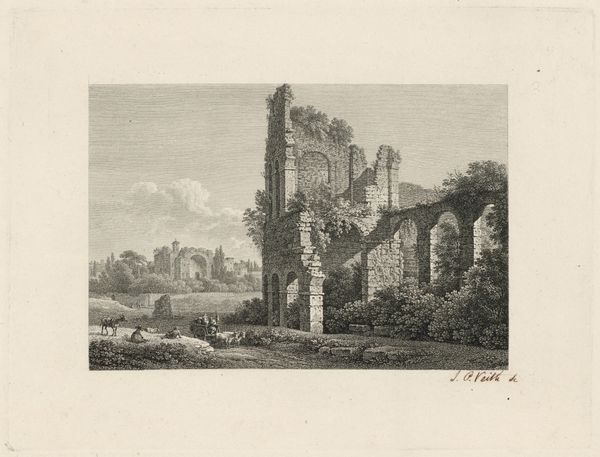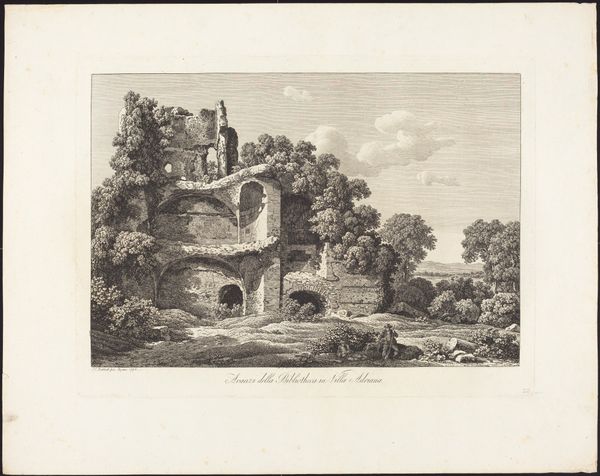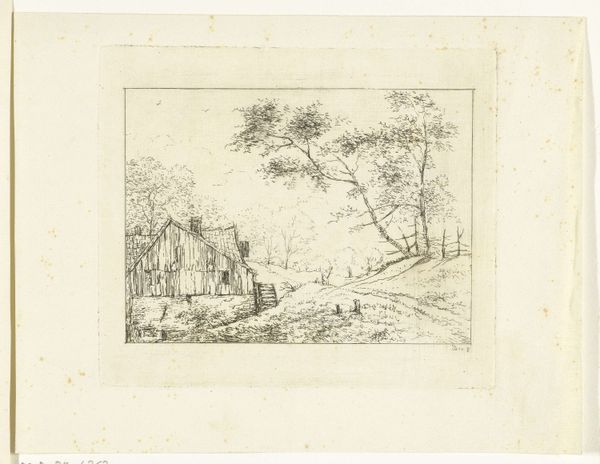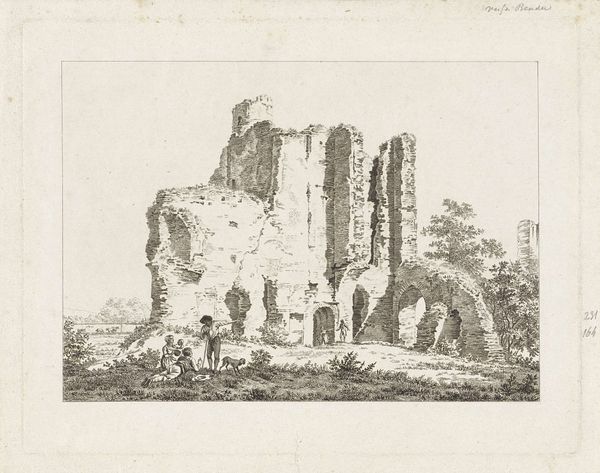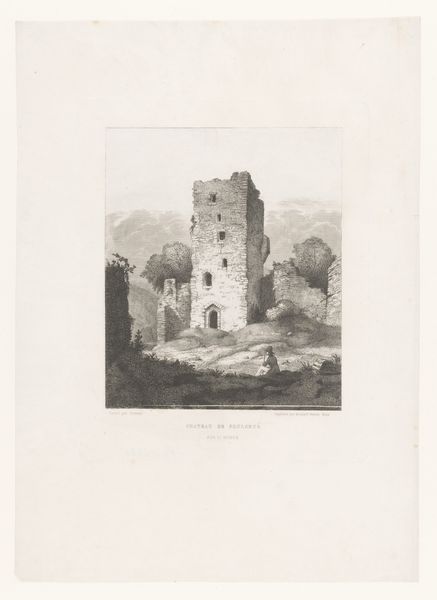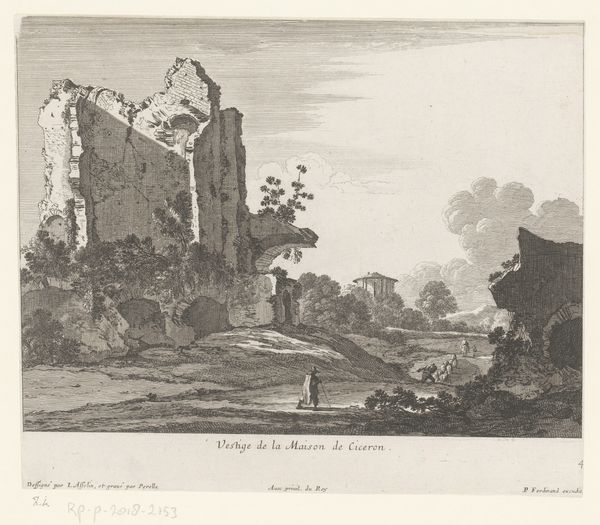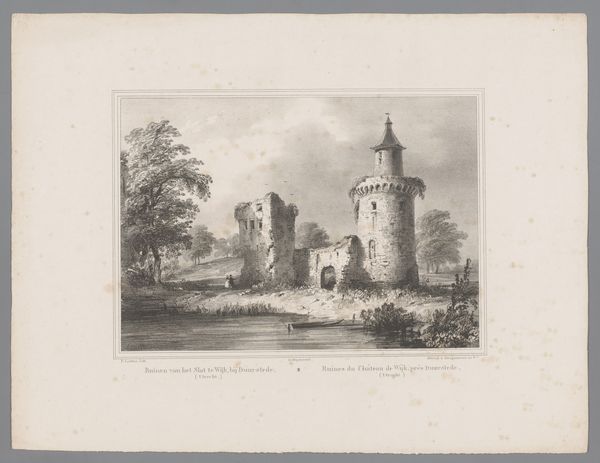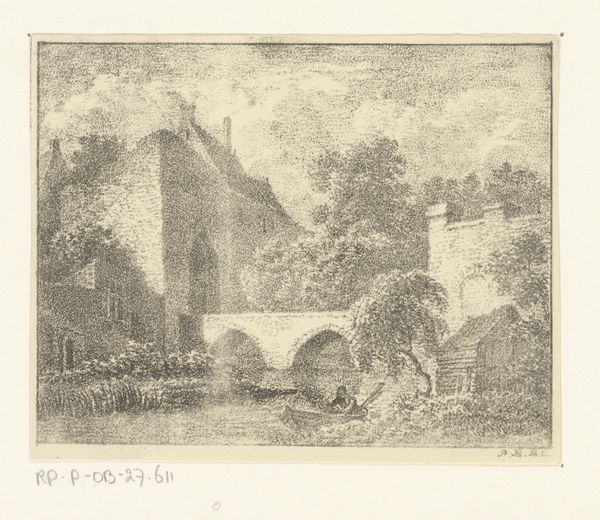
drawing, print, etching
#
drawing
# print
#
etching
#
landscape
#
romanticism
#
building
Dimensions: height 199 mm, width 270 mm, height 193 mm, width 245 mm
Copyright: Rijks Museum: Open Domain
Editor: This etching is entitled “Ruïne” by Pieter Bartholomeusz. Barbiers, created sometime between 1809 and 1837. It’s housed at the Rijksmuseum. The somber tones and depiction of dilapidated architecture evokes such a wistful mood. What do you see when you look at this piece? Curator: What immediately strikes me is the dynamic interplay between the geometric rigidity of the ruined structure and the organic forms of the surrounding foliage. Observe how the vertical thrust of the remaining tower contrasts with the horizontal extension of the land and foliage. This dialectic creates a visual tension, inviting closer inspection. How does the texture of the etching contribute to the overall composition? Editor: Well, the intricate cross-hatching seems to add depth and dimension to what might otherwise be a rather flat scene. It also accentuates the crumbling surfaces of the ruin, really emphasizing its age and decay. Curator: Precisely. Furthermore, let’s consider the figure placed within the scene. How does its scale and position affect your understanding of the ruin itself? Is the figure meant to exemplify its insignificance or greatness? Editor: I guess it emphasizes the monumentality of the ruins even more; that the tower appears huge in comparison. But I didn’t know whether that effect was deliberate. Curator: It’s the intentional balancing of elements. The artist's strategic use of form and line, and the strategic placing of organic versus geometric structure results in a meaningful artwork. What would you say is the overall lesson that the artist attempts to communicate to the viewer in this piece? Editor: I now understand how essential a formal reading of the artwork is, thank you. I now see that the art does mean something, thanks to the choices the artist makes in constructing the artwork. Curator: Indeed. It demonstrates how formal analysis enables a richer and deeper connection with art and reveals more.
Comments
No comments
Be the first to comment and join the conversation on the ultimate creative platform.
